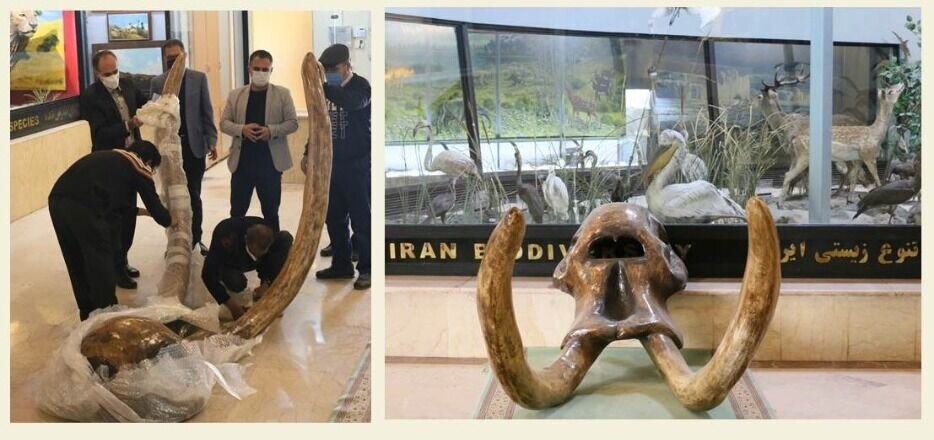Mastodon skull, ivory on show at biodiversity museum

TEHRAN – The Pardisan Park Biodiversity Museum in Tehran has put on show a skull and ivory dating back to 9 million years ago belonged to a mastodon – mammoth-like extinct creature that existed on the Earth until around 10,000 years ago.
During the excavations in the northwestern Mordagh village near Maragheh city, a right dentin piece with a length of 2.9 meters was found, which belongs to mastodonts, setting world’s record high in terms of length and diameter, Mohammad Medadi, head of National Museum of Natural History and Genetic Resources, said.
So, it was decided to completely reconstruct the skull and dentin on the left and make a replica of it for public display, he noted, IRNA reported on Monday.
During the studies, this sample belongs to the Upper Miocene in terms of age, he concluded.
The fossil region of Maragheh is world-famous for having fossils of large herbivores such as mastodont and dinotrium from the family of elephants, rhinos, and primates.
A mammoth is any species of the extinct elephantid genus Mammuthus, one of the many genera that make up the order of trunked mammals called proboscideans. The various species of mammoth were commonly equipped with long, curved tusks and, in northern species, a covering of long hair.
They lived from the Pliocene epoch (from around 5 million years ago) into the Holocene at about 4,000 years ago, and various species existed in Africa, Europe, Asia, and North America. They were members of the family Elephantidae, which also contains the two genera of modern elephants and their ancestors. Mammoths are more closely related to living Asian elephants than African Elephants.
FB/MG
